Adventures in My New Home
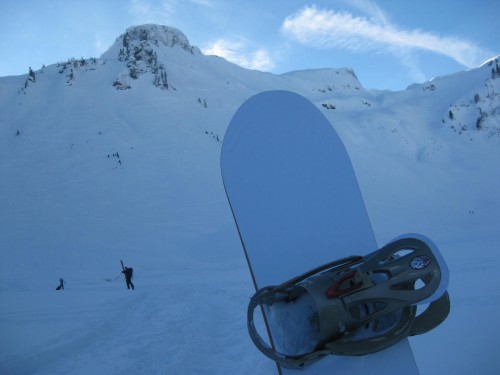
Though I was born in San Diego, California it doesn’t feel like home. For the last eight years I have lived and traveled in Japan and Chile. Each successive place in which I have lived or traveled has been nice, and my heart has slowly been pulled away from the sunshine and blue skies where I spent my youth. Since moving to the Pacific Northwest in June I have been quietly lulled to comfort by rainy days, cold temperatures and good coffee.  Each adventure and experience in which I have participated reinforces the sanctuary of western Washington.
At the turn of the year I participated in an avalanche safety and training course with American Alpine Institute, a Bellingham-based climbing school and guide service. The three-day class consisted of different components of avalanche safety, practical snow science, beacon practice and rescue scenarios. The majority of the course was spent in the locally famous backcountry adjacent to the Mt. Baker Ski Area.
Students study layers of snow and ice.
Upon entering the backcountry, we skinned west on Blueberry Road from the upper parking lot and cut north towards Table Mountain, a flat geological formation that curves from the arm of Mt. Shuksan to Mt. Herman. On that pristine bluebird day, our main risk was solar radiation on east-facing aspects at 6000 feet. According to the avalanche forecast that day we would be in safe terrain for our excursion.
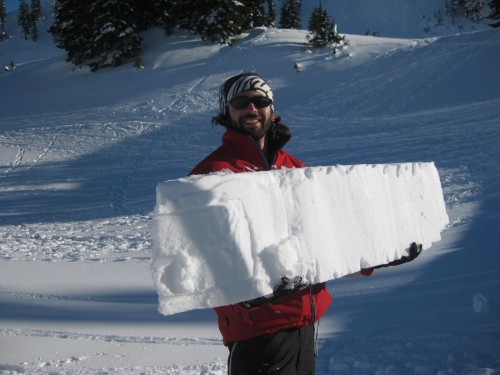
The author holding an 80 X 30 X 30 cm column of heavy snow.
The group broke into two teams of six and made quick time to our destination, taking a moment to discuss the westerly cloud formations, indicative of the incoming storm. At 11am, while Mt. Baker soaked up rays from the morning sun, we prepared for our descent when we heard a loud rumble nearby. Our guide promptly radioed the other group to confirm that they also heard the noise. Everyone agreed that snow had slid and we eventually spotted the location. The avalanche was located on the east-facing aspect of Mt. Herman at about 5000 feet, and directly above the skin tracks we had planned to ascend after the run!
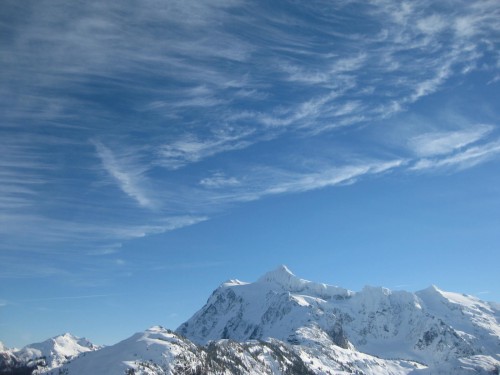
Mare’s tail cirrus clouds over Mt. Shuksan forecast a cold front moving in from the west.
We rode the west aspect under “Little Alaska,†a prominent rock formation, and both groups met at the rendezvous point at the bottom of the basin. There we pondered our planned itinerary which had us in those small avalanche zones. Unanimously, everyone agreed not to hold fast to our plan, and we changed the itinerary to skin back up the face we had just descended.
It came naturally for us all, even after only two days of discussion and study that any travel into an area of active avalanche activity is to be avoided. Though the slides were small, we immediately chose the safest area to ski and snowboard and did not elect to venture into the slide area. It seems anticlimactic because nothing happened to us. We didn’t survive an avalanche, nor did we rescue buried people. We didn’t call for help or make the news, but we did the most important thing in backcountry touring: we recognized the current avalanche conditions perfectly and were willing to abandon our number one plan.
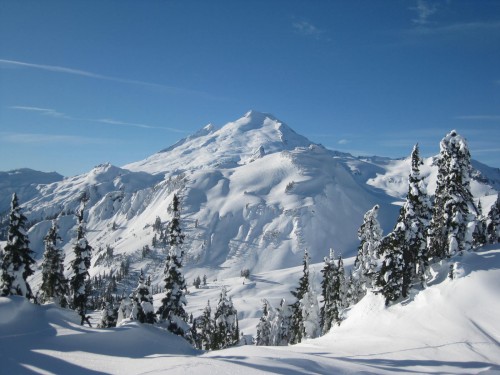
Mt. Baker enjoys a rare sunny day.
Many avalanche victims recognize the danger signs, but feel pressure to stick to the plan. The ability to forgo the “best†place is really hard because rarely are there bluebird days during which there is still great powder skiing, especially in the Pacific Northwest. I too felt the pressure to seize the moment and take the risk by going into the area in order to get a good line. Our tour that day was successful because nothing happened.
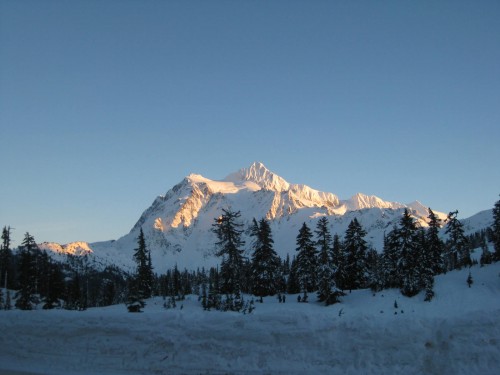
Mt. Shuksan at sunset.
I meet native Washingtonians and Northwest transplants who spend a lot of time enjoying the backcountry, and snow and avalanche awareness is vital to their experience. People have conversations about the weather and local forecasts more than anywhere else I’ve been. Local folklore doesn’t revolve around famous people or world events. Instead, tales describe the weather, like record snowfalls of 1999, 2003 and 2008 and how the chairlifts at the Mt. Baker Ski Area had to be dug out one year in order to access the runs. The more entrenched I become with the snow and backcountry, the more history I learn and more deeply my roots sink into western Washington.
My avalanche course adventure was a vital piece of becoming a “Pacific Northwesterner†so that I can explore the backcountry like everyone else. Furthermore, I have a new grasp on understanding the climate, weather and topography of Washington state. In the winter, wet, heavy snow sticks to these American Alps and lets me interact with the peaks. Those same ivory flakes glue me even more to this place where I feel comfortable referring to as home.


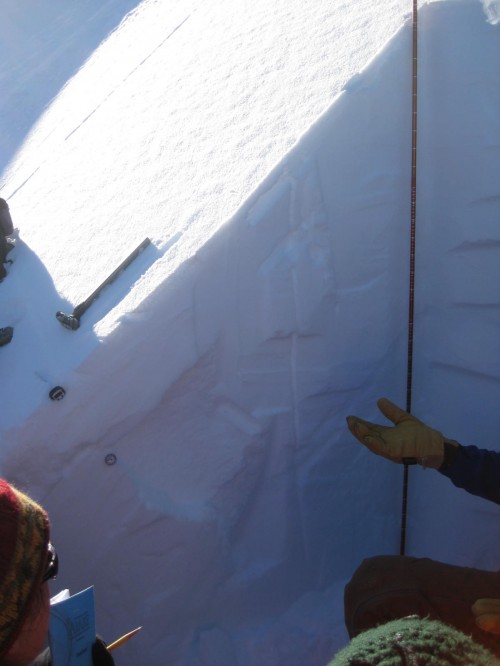
Beautiful photos Dave, great sights, nice read, thanks!